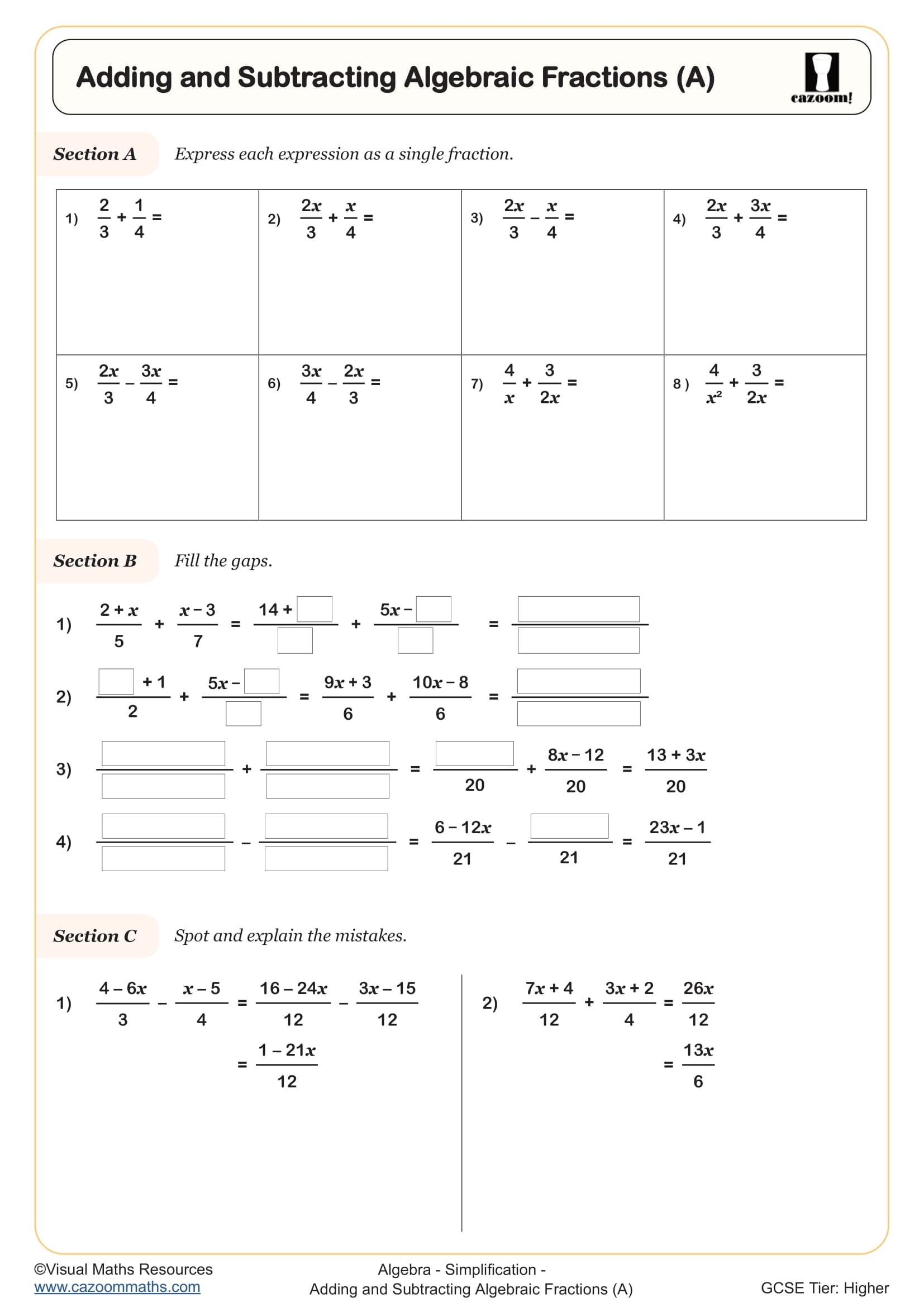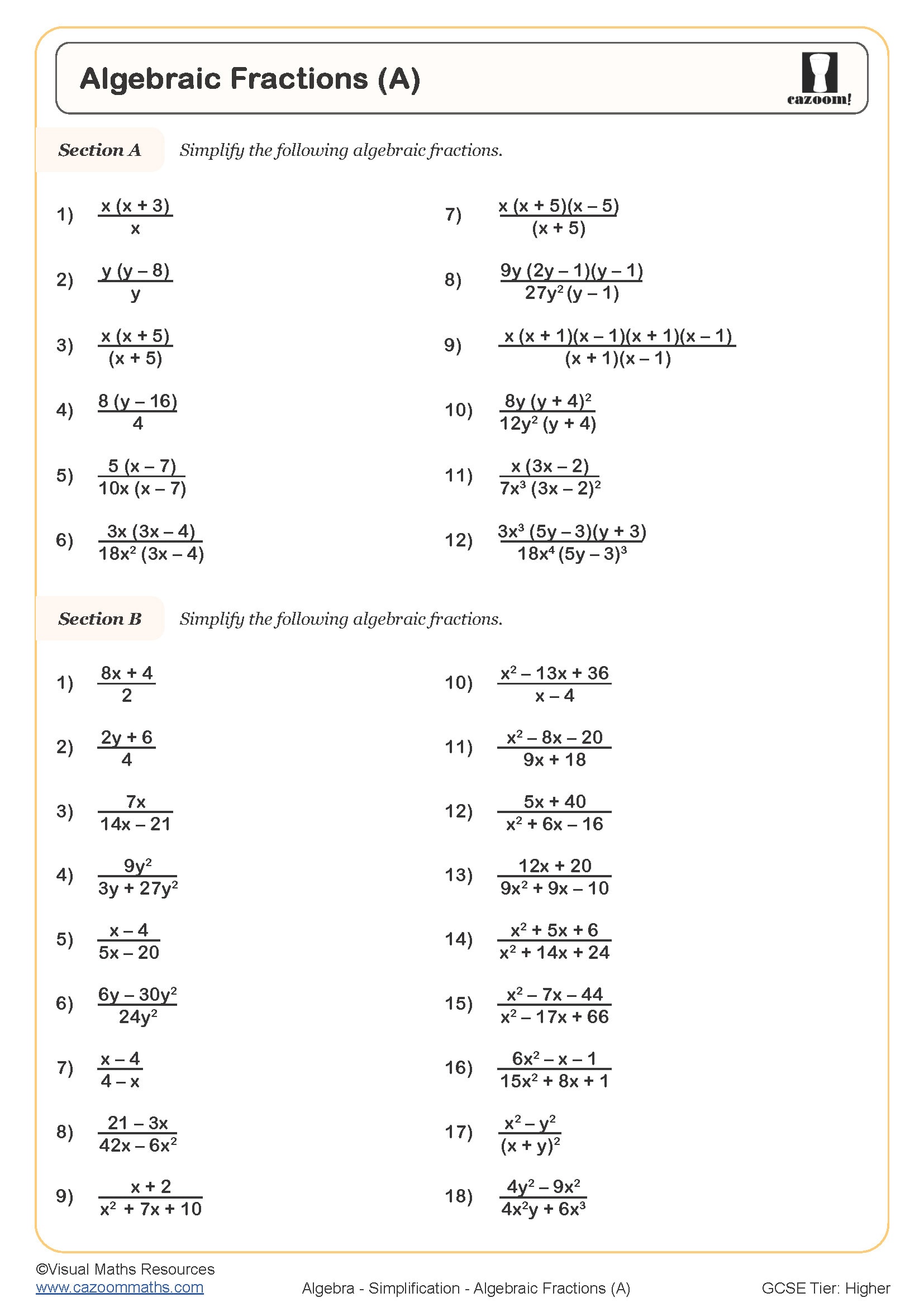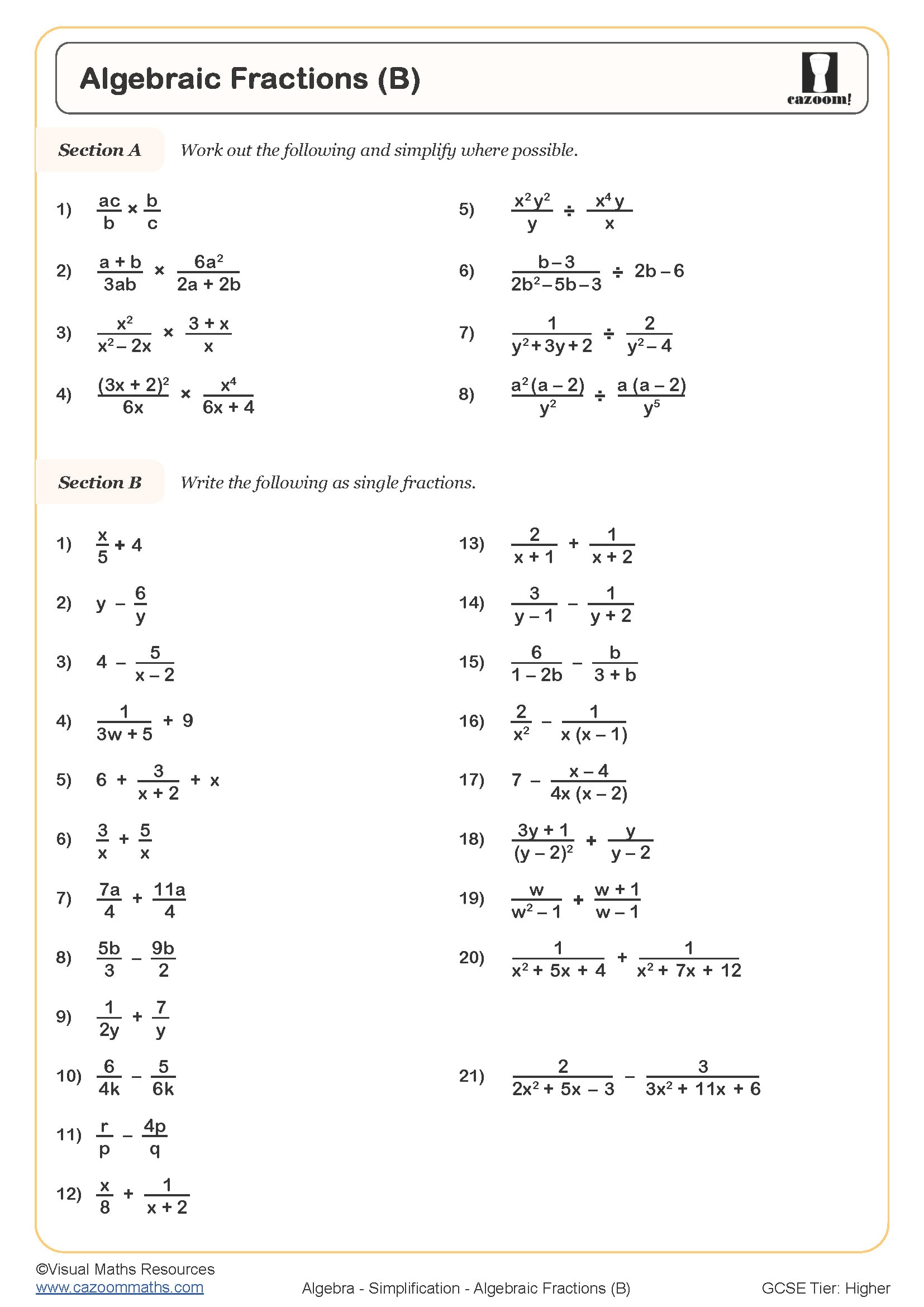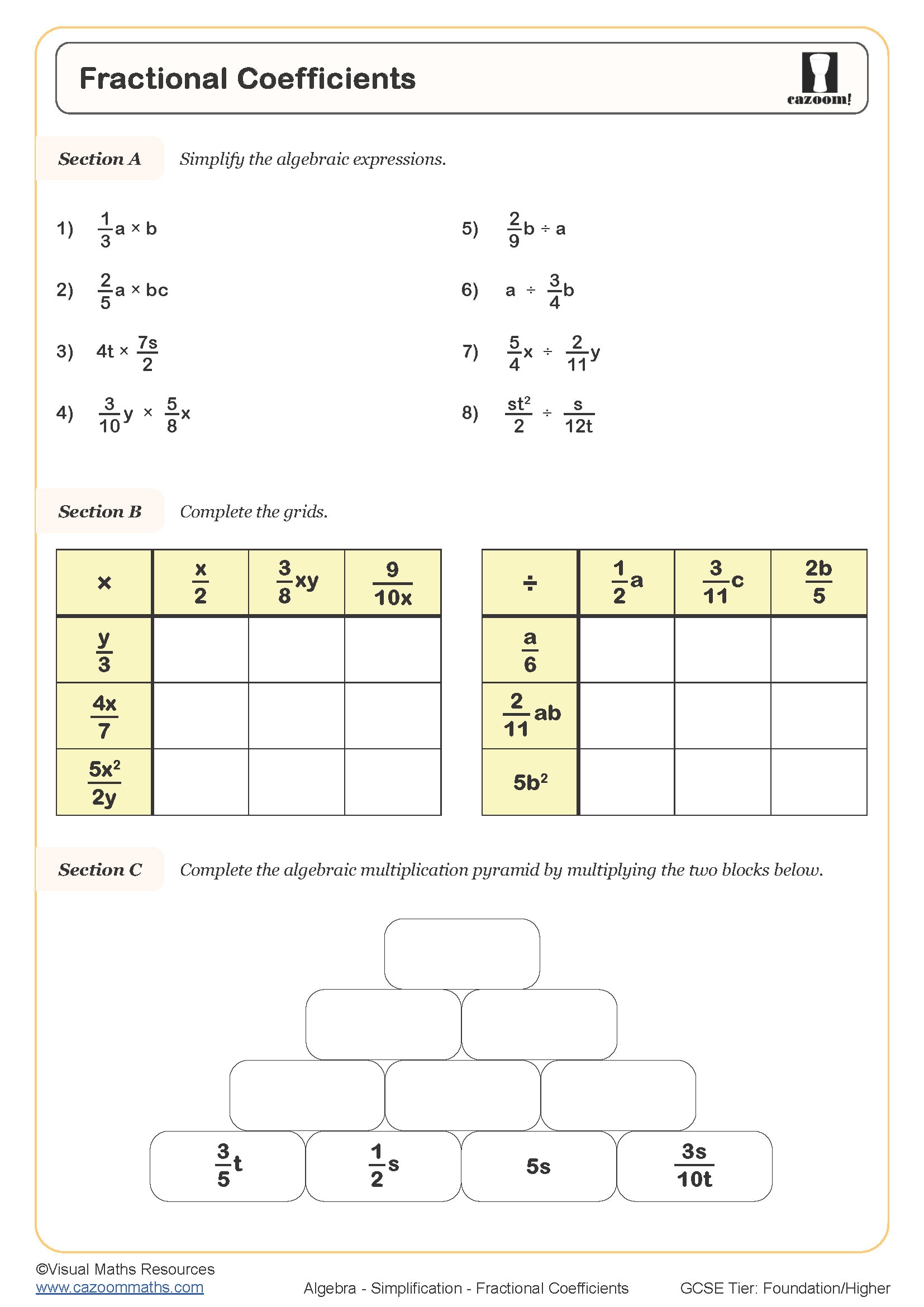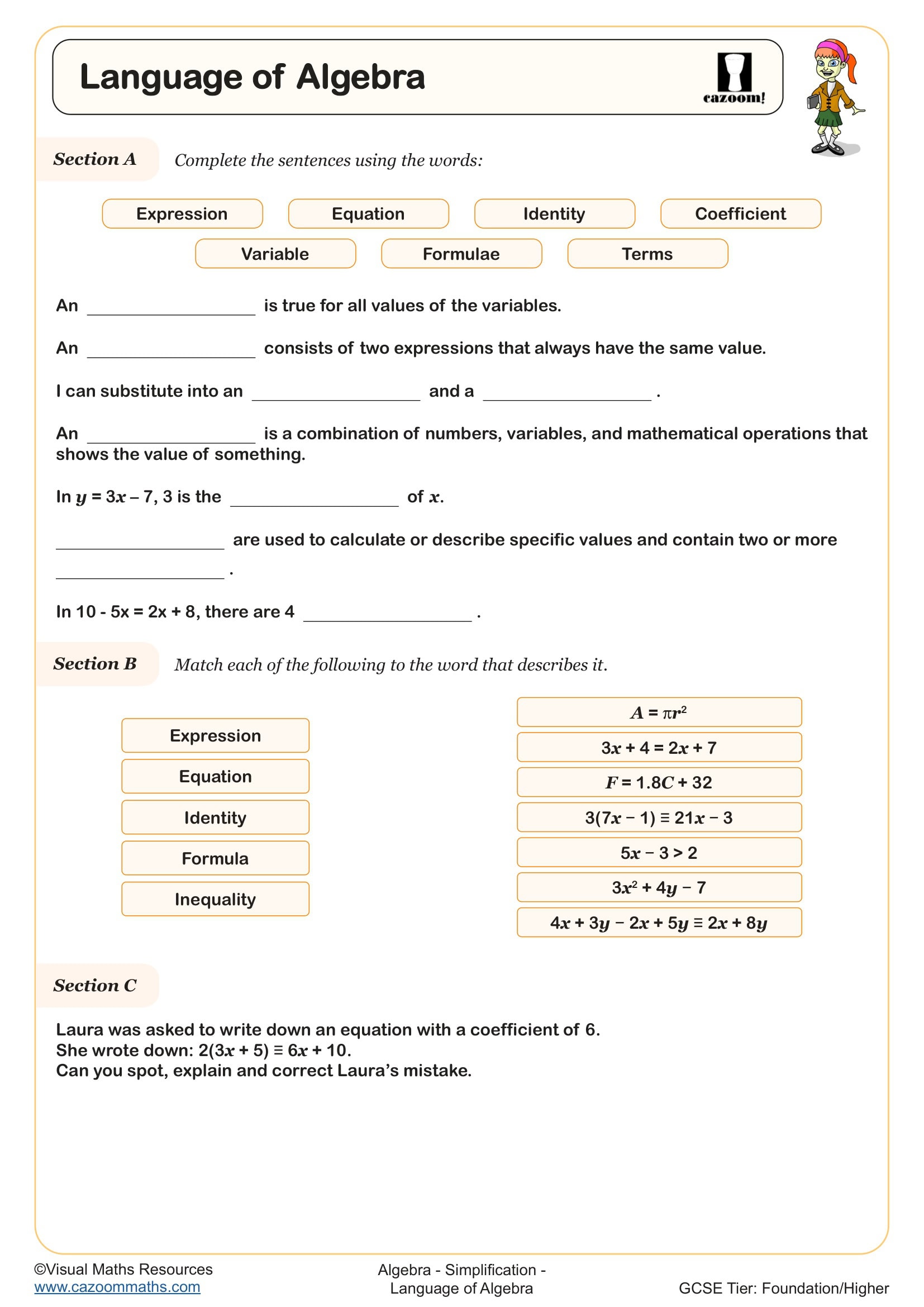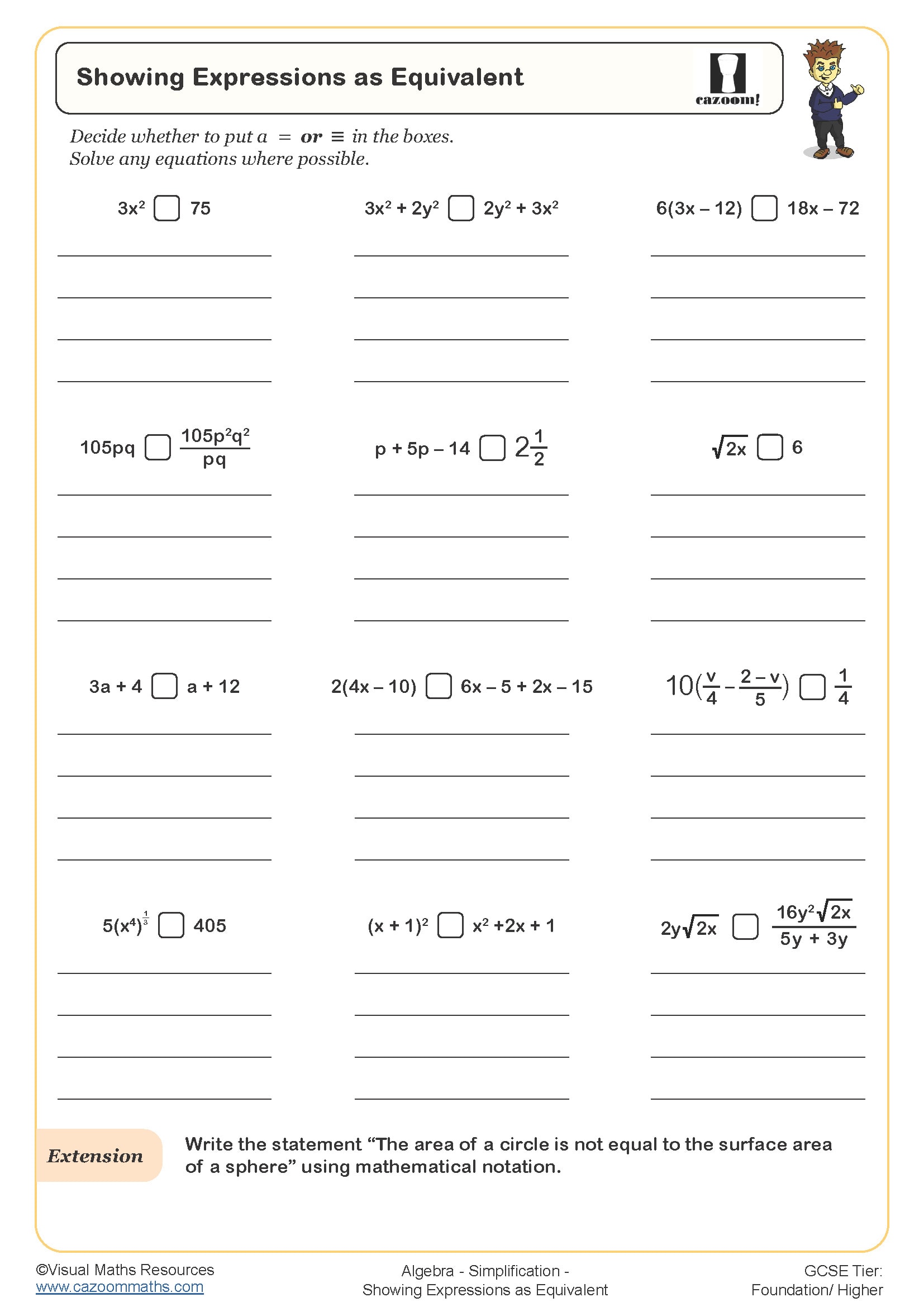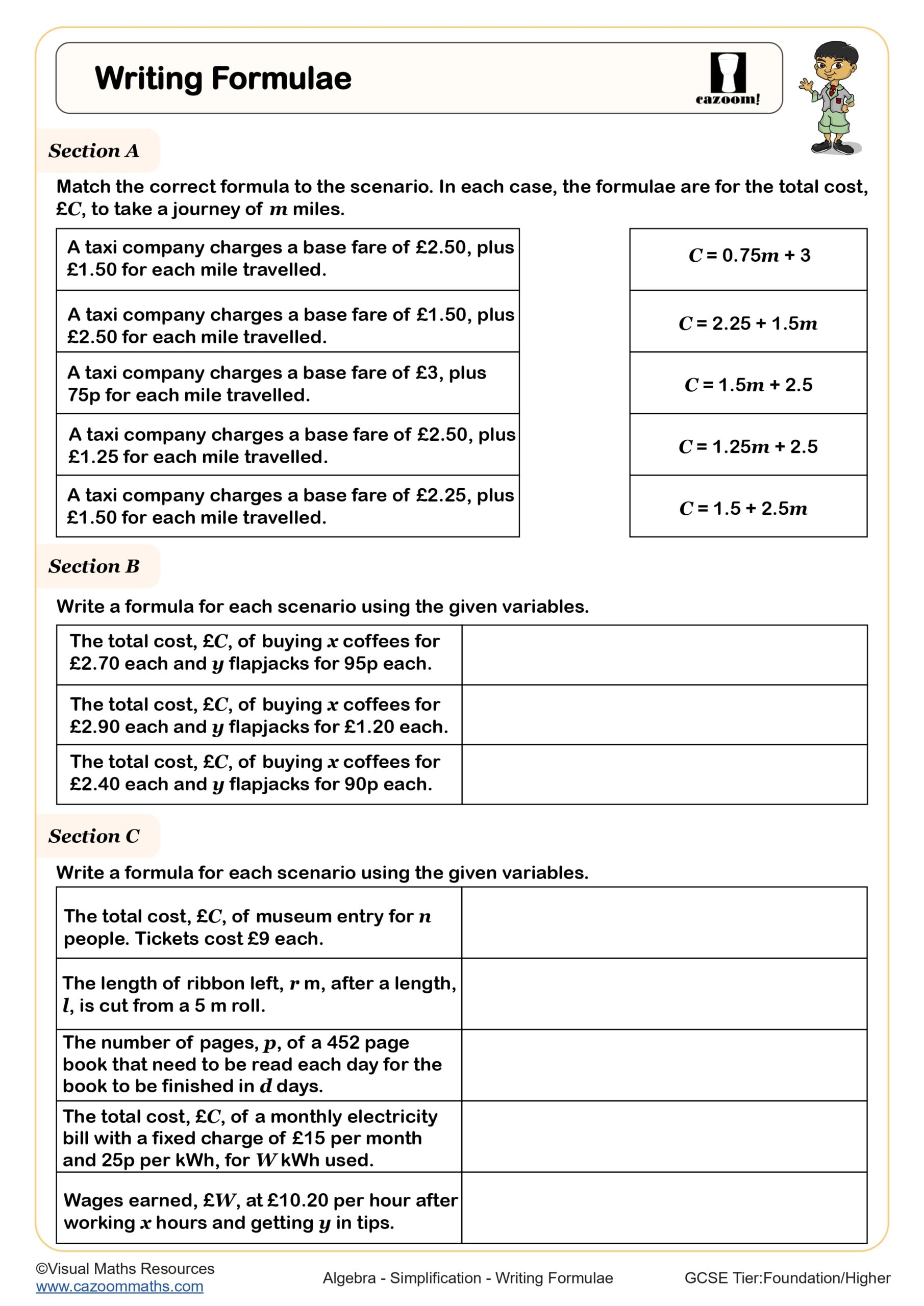Year 9 Simplification Worksheets
Why Ready-to-Print Year 9 Algebra Worksheets Do More Than Teach Simplification
Mastering simplification in Year 9 marks a pivotal shift from arithmetic thinking to abstract algebraic reasoning. Students who learn simplification methods will be able to handle expression manipulation, solve complex equations and recognise mathematical patterns in different situations. The worksheets with their organised structure enable students to develop problem-solving skills by practising algebraic conventions in a systematic way. The content of Year 8 develops organically through the introduction of fractional coefficients and algebraic fractions, which establish fundamental concepts for GCSE study. Students develop flexible mathematical understanding through structured exercises which teach them to connect various algebraic methods.
Specific learning benefits include:
• Understand fractional coefficient manipulation
• Develops systematic algebraic reasoning
• Strengthens pattern recognition skills
• Enhances problem-solving flexibility
• Improves mathematical communication accuracy
Worksheet Topics at a Glance: Writing Formulae, Algebraic Fractions, and More
The collection guarantees both procedural fluency and conceptual understanding by moving methodically from concrete numerical examples through pictorial representations to abstract algebraic manipulation. Worked solutions that demonstrate the mathematical reasoning behind simplification procedures are included with every worksheet. This topic covers all of the essential simplification skills needed at this level, from basic language conventions to complex fraction operations.
The worksheets in this collection include:
• Fractional Coefficients — develops skills in handling expressions with fractional multipliers
• Language of Algebra — establishes correct notation and algebraic conventions
• Writing Formulae — translates word problems into algebraic expressions systematically
• Adding and Subtracting Algebraic Fractions (A) — introduces operations with algebraic denominators
• Algebraic Fractions (A) — focuses on fundamental fraction manipulation techniques
• Algebraic Fractions (B) — extends fraction work to more complex expressions
• Multiply and Divide Algebraic Fractions (A) — builds multiplication and division fluency
• Showing Expressions as Equivalent — develops proof skills through algebraic manipulation
• Simplify Algebraic Fractions (A) — consolidates simplification strategies for complex fractions
Get Consistent Accuracy Through Year 9 Simplification Activities
Teachers consistently choose these simplification resources because they address the diverse needs found in typical Year 9 classrooms. The worksheets present a progressive level of difficulty, which lets teachers adapt instruction to individual students without needing separate resource materials. The extension problems in each worksheet serve as an additional challenge for advanced students, while basic skills remain accessible to all students. The design of clear layouts helps students concentrate on mathematical procedures because it avoids overwhelming them with too much information that would otherwise divert their attention from following instructions. Answer sheets save marking time whilst providing diagnostic information about common misconceptions . The combination of regular practice with problem-solving activities keeps students interested in their lessons because it stops them from getting stuck in repetitive work that is common in algebra practice. The Cazoom Maths worksheets work perfectly with current lesson plans to provide additional learning materials which do not repeat any existing textbook content.
The Real-World Maths That Starts With KS3 Simplification Worksheets
Students encounter different useful applications of algebraic expression simplification during their daily activities. For example-
•Engineering calculations use mathematical complexity to create operational solutions which generate maximum performance outcomes.
• The development of computer programming depends on basic logical expressions, which enable efficient coding.
• Financial planning employs algebraic simplification techniques to evaluate different investment alternatives.
• Experimental data relationships require scientific research to achieve simplification for proper analysis.
• Architecture requires simplifying structural load calculations
• Sports analytics provides a system to evaluate performance metrics, which enables better comparison between athletes.
• Medical dosage calculations require algebraic simplification to ensure patient safety.
• Environmental modelling transforms complex system connections into workable parts for analysis.
